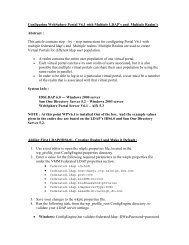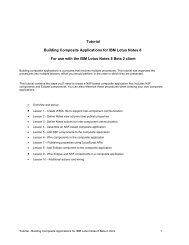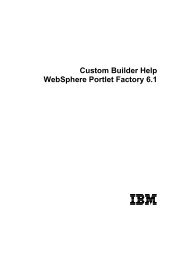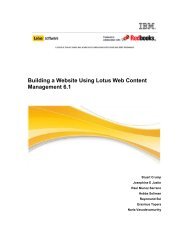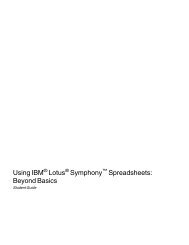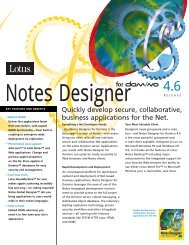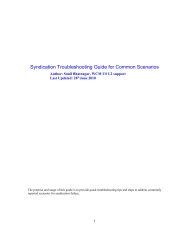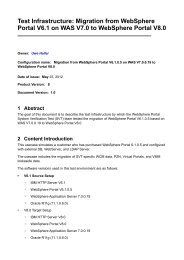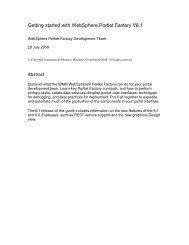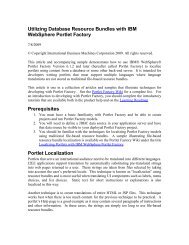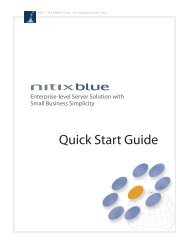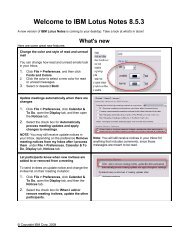Create successful ePaper yourself
Turn your PDF publications into a flip-book with our unique Google optimized e-Paper software.
The statement will be interpreted as follows:SELECT * FROM status a WHERE a.id IN (?);The parameter is not interpreted as a list.Workarounds:v Use an inner query within the IN clause. For example:SELECT * FROM status a WHERE a.id IN(SELECT code FROM table WHERE column = value);v Use the exact number of parameters within the IN clause. For example:SELECT * FROM status a WHERE a.id IN(’:airports1’, ’:airports2’, ’:airports3’);Restrictions added to parameter names in relational database feed queriesEffective with <strong>Mashup</strong>Hub, Version 1.1, for both integer and string parameternames, the leading character following the colon (:) must begin with an alphabeticcharacter. Subsequent characters can be a combination of alphanumeric charactersor underscore characters (_). For example, :dept_2 for an integer parameter nameand ’:price_2’ for a string parameter name.Integer parameters are not allowed inside string parametersEffective with <strong>Mashup</strong>Hub, Version 1.1, integer parameters are not allowed withinstrings in relational database feed queries. Strings that start with a colon and areenclosed within single quotation marks are string parameters, for example,’:text’. Strings that start with a colon and are not enclosed within quotationmarks are integer parameters, for example, :number. However, the string :number isno longer treated as parameter marker in the following code ’text :number text’.Username is displayed on Logout buttonThe name of the currently logged-in user is displayed when you hover the mouseover the Logout button in the upper-right of the InfoSphere <strong>Mashup</strong>Hub screen.Use this enhancement to identify which username you are using if you use morethan one login for a <strong>Mashup</strong>Hub instance.″Deploy to Lotus <strong>Mashup</strong>s″ action addedThe Deploy to Lotus <strong>Mashup</strong>s action is available to users who have a<strong>Mashup</strong>Hub Administrator role. The Deploy to Lotus <strong>Mashup</strong>s action is displayedin the Details page for an iWidget Package (.war) file, if the deployIWidgetPackagesetting is set to admin-only in server.config.ini file. (See next item.) The Deploy toLotus <strong>Mashup</strong>s action only deploys an iWidget to Lotus <strong>Mashup</strong>s. The iWidget isnot displayed in the Lotus <strong>Mashup</strong>s palette. To add an iWidget to the Lotus<strong>Mashup</strong>s palette, use the Add to Lotus <strong>Mashup</strong>s action.New configuration settings control adding and deploying iWidget packages toLotus <strong>Mashup</strong>s<strong>Mashup</strong>Hub <strong>V1.1</strong> introduces new security settings for adding and deployingiWidget WAR packages to Lotus <strong>Mashup</strong>s. The settings do not affect iWidgets thathave been registered in the catalog by specifying a URL, nor do the settings affectgeneric (non-WAR) widgets.What’s new? 13



